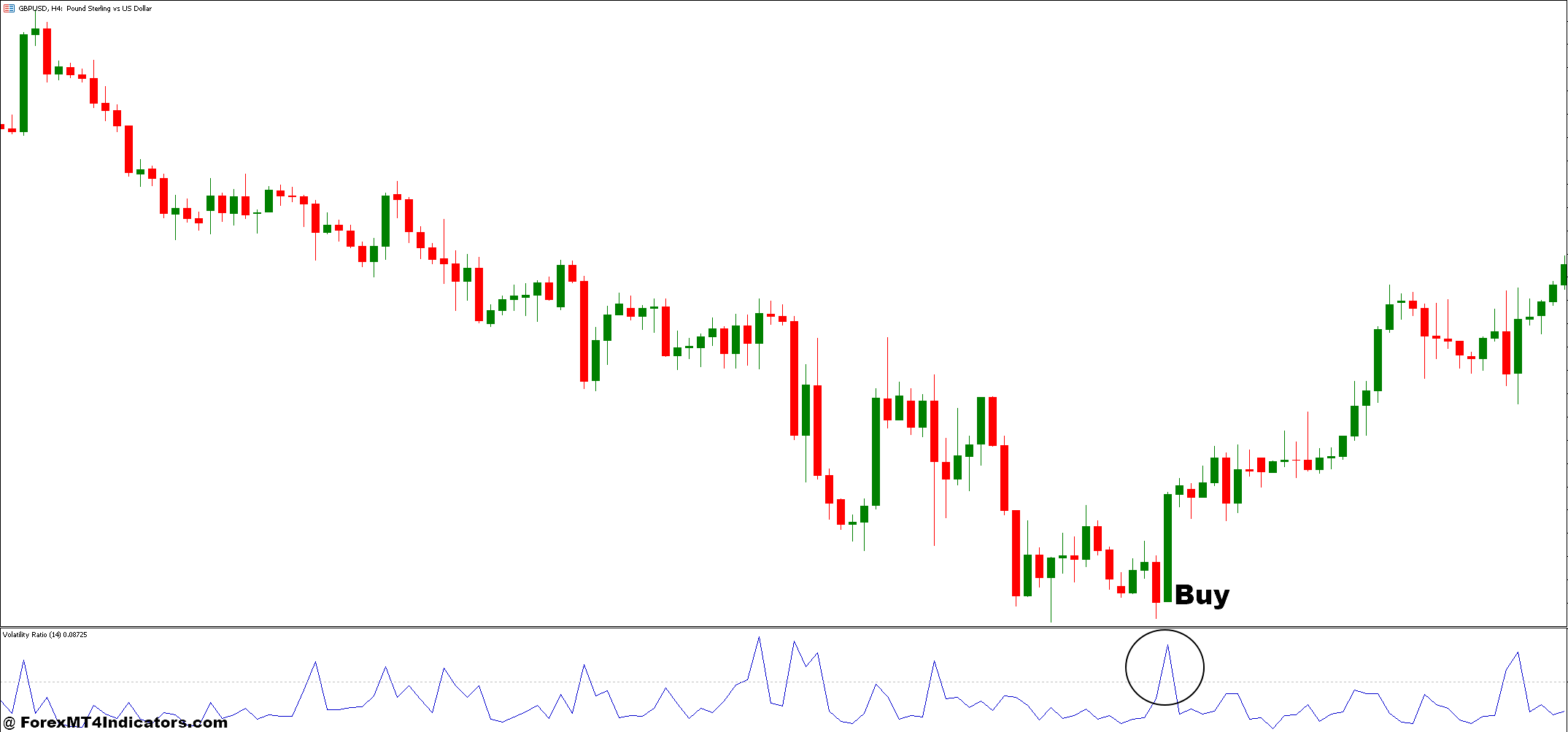
The Profit Calculator and Volatility Ratio Forex Trading Strategy combine two powerful tools that can significantly enhance a trader’s ability to navigate the unpredictable forex markets. The Profit Calculator provides a clear picture of potential gains or losses by calculating the outcome of trades based on entry and exit points, lot size, and stop-loss or take-profit levels. This allows traders to make informed decisions before executing a trade, managing risk effectively, and maintaining control over their positions. Meanwhile, the Volatility Ratio offers insights into market fluctuations, enabling traders to gauge how much price movement is likely within a given timeframe. Together, these tools create a strategy that helps traders maximize profits while minimizing risk exposure.
Incorporating a Profit Calculator into a forex trading strategy brings a level of precision and confidence that is vital in a market known for its volatility. By estimating potential profits and losses ahead of time, traders can assess the risk-to-reward ratio of a trade and adjust their position sizes accordingly. This allows for smarter decision-making and greater control, ensuring that traders do not overexpose themselves to risky situations. By incorporating this tool, traders can tailor their approach to suit their individual risk tolerance and trading goals, making it an indispensable part of a sound trading plan.
On the other hand, the Volatility Ratio is an equally important component of this strategy. It measures the degree of price fluctuations within a particular currency pair, giving traders a better understanding of market dynamics. A high volatility ratio signals that there may be significant price movements ahead, creating opportunities for larger profits, but also posing higher risks. Conversely, a low volatility ratio suggests calmer market conditions, where profits may be more gradual but potentially more consistent. By integrating the Volatility Ratio into their strategy, traders can fine-tune their approach, selecting the right market conditions to match their trading style and risk profile, making their strategy both more adaptive and effective in changing market environments.
Profit Calculator Indicator
The Profit Calculator Indicator is a valuable tool that helps forex traders estimate the potential outcome of a trade before making any decisions. It calculates profits and losses based on key parameters such as entry price, stop-loss, take-profit levels, and lot size. The main benefit of this indicator is its ability to provide a precise risk-to-reward ratio, allowing traders to assess whether a trade is worth taking based on the potential for gain versus the risk of loss. This level of clarity helps traders make more informed decisions and avoid emotional trading, as they can see in advance whether the trade fits within their risk management strategy.
The Profit Calculator typically works by simply inputting the key trade details such as currency pair, entry point, stop-loss level, take-profit target, and the size of the position (lot size). Once these parameters are set, the indicator automatically computes the expected profit or loss at various levels. This is especially helpful when traders are managing multiple positions at once, as it offers an easy way to track potential outcomes across different trades. Furthermore, it can be adjusted for different account types, ensuring that the calculations are aligned with the trader’s specific financial goals and trading style. By using this indicator, traders can make decisions with more confidence, knowing exactly how much they stand to gain or lose.
The Profit Calculator is also a vital risk management tool, as it helps traders decide whether the potential profit is worth the risk involved. With this indicator, traders can modify their entry or exit points to achieve a better risk-to-reward ratio or adjust the position size to fit their risk tolerance. By using the Profit Calculator consistently, traders can avoid the common mistake of entering trades without fully understanding the potential outcome, which can lead to unexpected losses and inconsistent results. It fosters a more disciplined approach to trading, allowing traders to optimize their strategies for consistent profitability.
Volatility Ratio Indicator
The Volatility Ratio Indicator is a tool that helps traders assess the level of price fluctuation in a currency pair over a specific period of time. By measuring volatility, it provides insights into how much a currency pair is expected to move, both in terms of magnitude and direction. Volatility is a crucial factor in forex trading because it directly impacts risk and reward. A high volatility ratio typically signals that there will be larger price movements, creating opportunities for significant profits but also increasing the risk of losses. On the other hand, a low volatility ratio suggests a calmer market, where price movements are smaller and more gradual, often leading to steadier, less risky profits.
The Volatility Ratio is usually calculated by comparing the price range (the difference between the highest and lowest prices) of a currency pair over a chosen period with its historical price range. A higher ratio indicates increased volatility, while a lower ratio points to stability. Traders can use this indicator to determine the best times to enter or exit the market. For instance, during periods of high volatility, traders may choose to scale back on position sizes to manage risk better, while in low-volatility environments, they might feel more comfortable taking larger positions. By combining the Volatility Ratio with other tools, traders can develop strategies that align with current market conditions, improving the accuracy and effectiveness of their trades.
One of the key advantages of the Volatility Ratio Indicator is its ability to give traders a sense of market timing. Understanding when the market is likely to experience sharp price movements can be a game-changer for identifying breakout opportunities or avoiding periods of market congestion. Moreover, it can help traders adapt their strategies to changing market conditions. For example, during times of high volatility, traders might use wider stop-loss orders to account for larger price swings, while in more stable markets, tighter stop-loss levels can be used to protect profits. By incorporating the Volatility Ratio into their trading toolbox, traders can make more calculated decisions and better manage the risks associated with volatile market conditions.
How to Trade with Profit Calculator and Volatility Ratio Forex Trading Strategy
Buy Entry
- Set Entry Price: Identify a favorable entry point based on your analysis (e.g., at a key support level, or after a pullback).
- Calculate potential profit and loss based on entry, stop-loss, take-profit levels, and lot size.
- Ensure a positive risk-to-reward ratio (ideally 2:1 or higher).
- High Volatility: If volatility is high, expect larger price swings and adjust your stop-loss accordingly to avoid getting stopped out prematurely.
- Low Volatility: If volatility is low, consider using tighter stop-loss levels and more conservative take-profit targets for smaller, steadier profits.
- Enter the trade when the price shows signs of a bullish breakout or continuation in the market.
- Ensure the market conditions align with your risk management parameters (position size, stop-loss, and take-profit).
- Adjust position size based on the Volatility Ratio. For high volatility, reduce position size to minimize risk; for low volatility, you can trade larger positions.
- Monitor and Adjust: Keep monitoring market conditions and adjust stop-loss and take-profit levels if volatility or market conditions change.
Sell Entry
- Set Entry Price: Identify an entry point based on your analysis (e.g., after a resistance level is reached or a bearish reversal pattern forms).
- Calculate potential profit and loss based on entry, stop-loss, take-profit levels, and lot size.
- Ensure the risk-to-reward ratio meets your trading criteria (preferably 2:1 or higher).
- High Volatility: If the volatility ratio indicates high volatility, expect wider price fluctuations and adjust your stop-loss levels to accommodate larger swings.
- Low Volatility: If the volatility ratio indicates low volatility, tighten your stop-loss and take-profit targets for smaller, more predictable moves.
- Enter the sell trade when price breaks below a key support level or shows a confirmed bearish trend.
- Make sure market conditions support the trade (i.e., low volatility means smaller, more consistent price movements, while high volatility may signal potential for quick price action).
- For high volatility, decrease your position size to reduce risk. For low volatility, you can afford to trade larger positions with a tighter stop-loss.
- Monitor and Adjust: Continue to monitor price action and adjust your stop-loss and take-profit levels if volatility changes or the market moves against you.
Conclusion
Incorporating both the Profit Calculator and Volatility Ratio into your forex trading strategy significantly enhances your ability to manage risk, optimize trades, and increase overall profitability. The Profit Calculator provides a clear, calculated view of potential rewards and risks, ensuring you enter trades with a well-defined risk-to-reward ratio. Meanwhile, the Volatility Ratio helps you assess the market’s conditions, allowing you to adjust your strategy according to the expected price fluctuations. Whether you’re trading in highly volatile markets or more stable conditions, these tools ensure that your decisions are data-driven and aligned with your risk management goals.
Recommended MT4 Broker
XM Broker
- Free $50 To Start Trading Instantly! (Withdraw-able Profit)
- Deposit Bonus up to $5,000
- Unlimited Loyalty Program
- Award Winning Forex Broker
- Additional Exclusive Bonuses Throughout The Year
- Exclusive 50% Cash Rebates for all Trades!
Already an XM client but missing out on cashback? Open New Real Account and Enter this Partner Code: 𝟕𝐖𝟑𝐉𝐐
Click here below to download:




